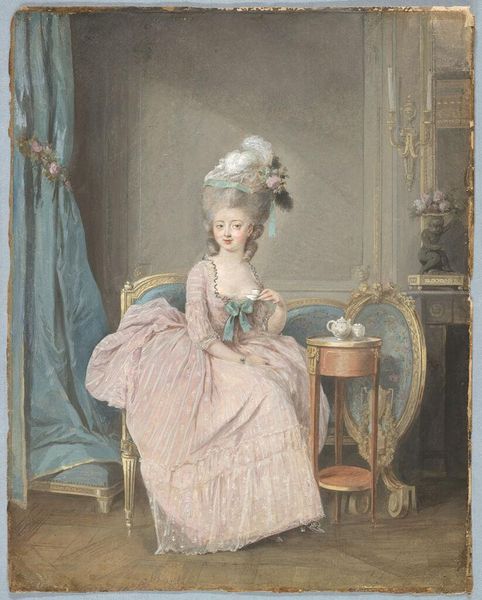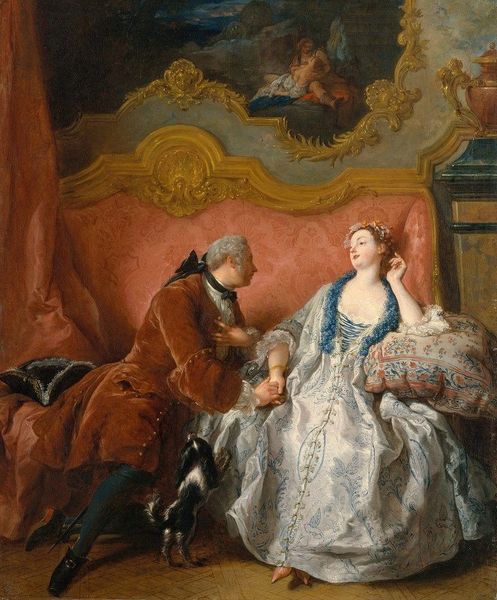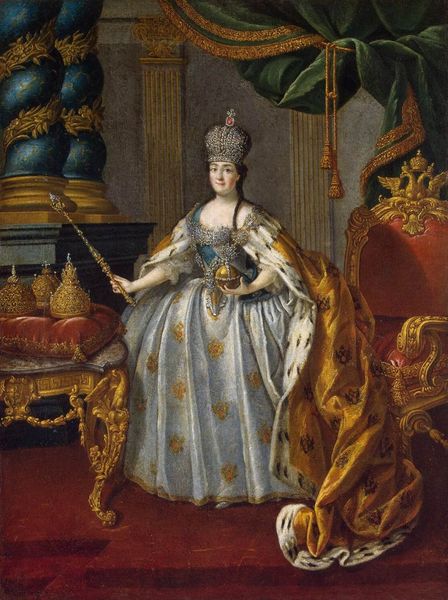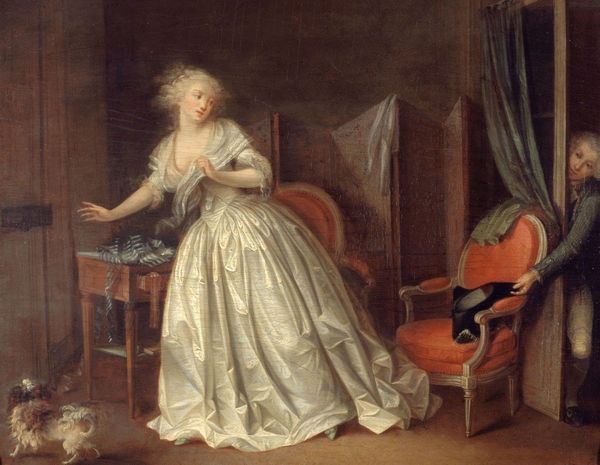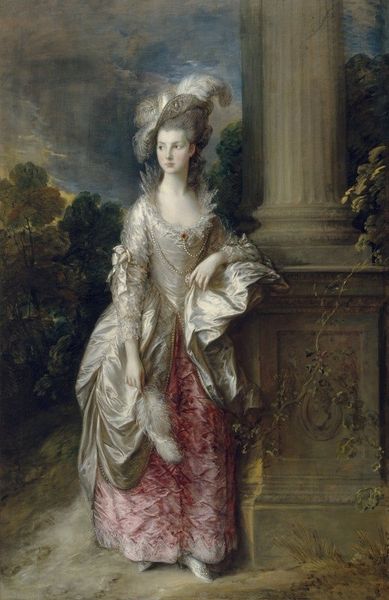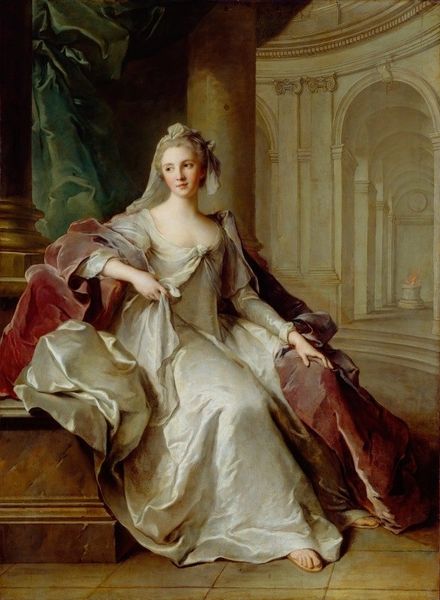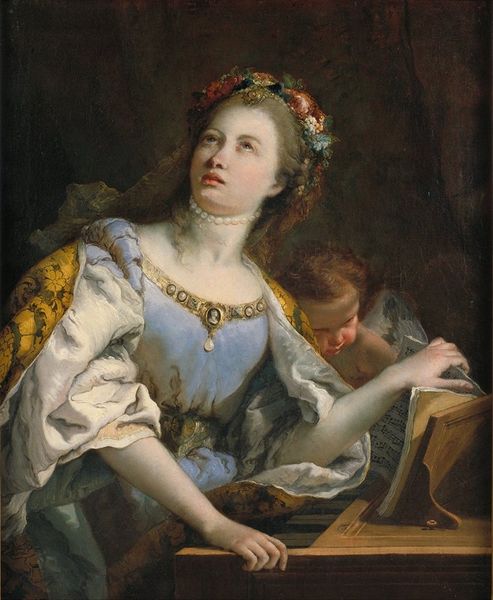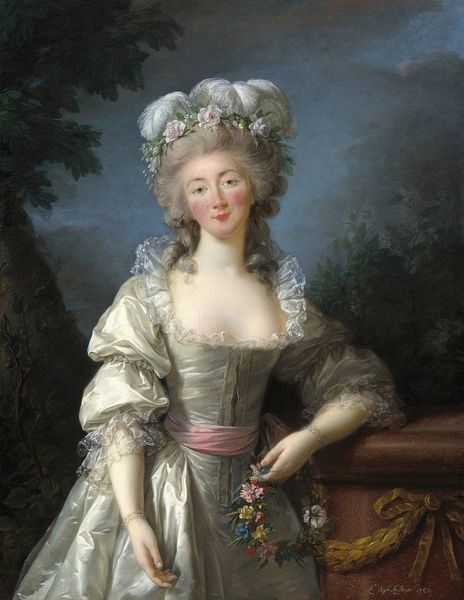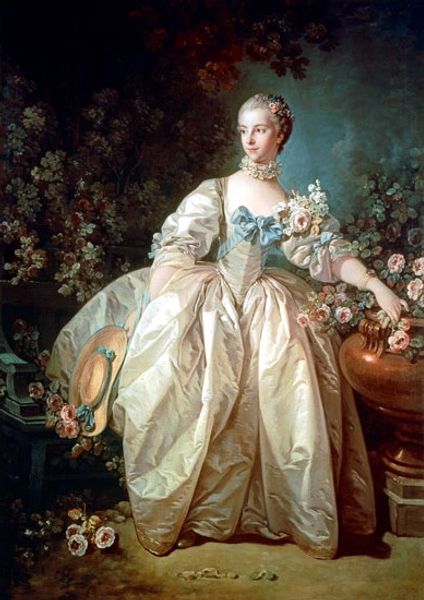
Copyright: Public Domain: Artvee
Curator: Here we see Jean-Honoré Fragonard's oil on canvas painting "The Love Letter", created circa the early 1770s. I'm struck immediately by the soft, almost dreamlike quality of the light and color. Editor: Yes, it’s a hazy depiction. I’m immediately drawn to the labor seemingly missing here – there's an incredible opulence, but who actually produced that silk, made the paper, bred that breed of dog. That context informs how the leisured classes are represented, certainly. Curator: Indeed. The composition itself draws the eye in a gentle arc, from the lush drapery on the left to the woman, the letter and bouquet she holds, and concluding at the attentive little dog. The curve creates a sense of intimacy and invitation. The arrangement certainly amplifies that coy interaction. Editor: It really invites one to focus on the materials. That blue silk; notice the way the paint is applied to give the texture, and what that tells you about how wealthy someone was based on the material construction, including the quality of pigments. The cost would’ve been significant. It’s almost a direct translation of power into image. Curator: An interesting observation. While those qualities do speak to societal standing, consider also how Fragonard uses color and light to emphasize the emotional state. The rosy cheeks mirroring the flowers, the pale blue of her dress enhancing the soft blush, a semiotic expression of romantic tension, amplified by the architecture of its pictorial space. Editor: I understand, but to me the real expression lies in the material consumption itself. I can only really think of the enslaved or working people actually responsible. Without acknowledging them, the ‘reading’ of emotion rings very hollow indeed. Curator: A vital point of view. Certainly, this "Love Letter" has many facets. Delving into the brushwork alongside the historical context provides multiple avenues for interpreting its message. Editor: Indeed. Seeing both structure and material means helps contextualize our perspective. It really does affect how we see.
Comments
No comments
Be the first to comment and join the conversation on the ultimate creative platform.
